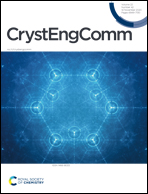Copper sulfide nanostructures and their sodium storage properties
Abstract
Hexagonal CuS nanosheets and microspheres composed of numerous flakes were successfully prepared by sonochemical and solvothermal methods, respectively. Ultrasonic radiation and templates of Cu(OH)2 nanoribbons play important roles in the growth of CuS nanosheets. The surfactant PVP restricts the diffusion and growth process, inducing the formation of CuS microspheres under solvothermal conditions. Their better crystallinity, larger interlayer distance and incompact structure made the CuS nanosheets more conducive to the transport of sodium ions. Electrochemical studies showed that the nanosheet electrode exhibits better sodium storage performance compared to the CuS microspheres. The higher specific surface area (25.209 m2 g−1) of the CuS nanosheets provides a larger electrode/electrolyte contact area in the sodiation–desodiation process. The first discharge capacity of the CuS nanosheets could reach 398.6 mA h g−1 which is 71.18% of the theoretical capacity (560 mA h g−1). These results indicate that incompact structures have an advantage in storing sodium ions compared with compact structures.



 Please wait while we load your content...
Please wait while we load your content...